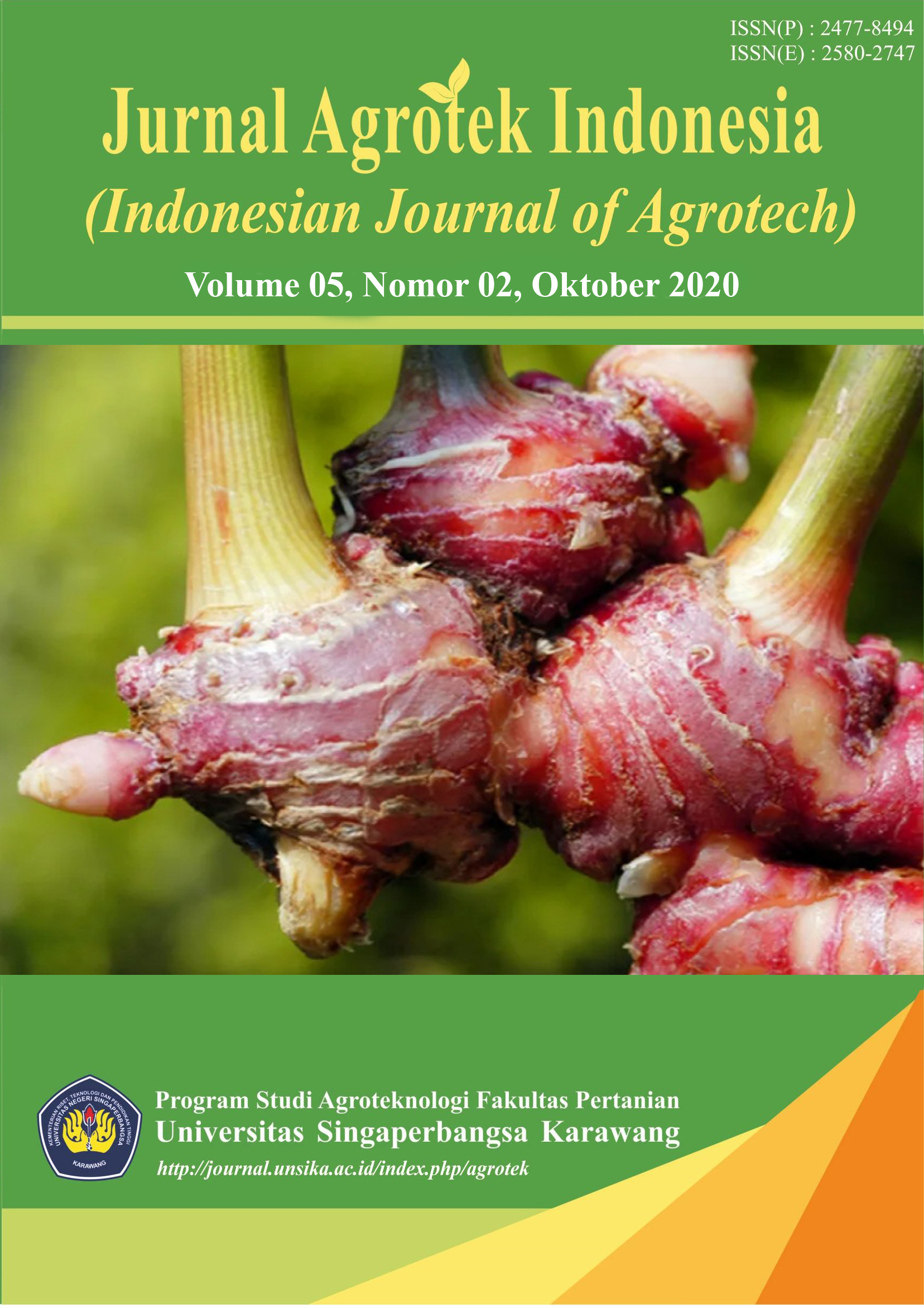Agronomic Diversity and Yield Potential of Some Rice Galur (Oryza sativa L.) Dihaploid Outcomes of Antera Culture in Karawang County
Abstract
Rice is a staple food source of nearly 40% of the world's population and the main food of Southeast Asian residents. One attempt to increase the production of superior rice varieties that is through anther culture.Research was implemented in the UPTD of Rengasdengklok Agricultural Management, in March to June 2020. The purpose of the study was to obtain dihaploid rice paddy grooves the result of anther culture that had a good agronomic appearance and high yield power. The research method used is an experimental method using single Factor RAK with treatment amount 9 namely: A (DR1-33-1-2), B (DR2-46-1-1), C (DR2-113-1-1), D (DR4-2-1-2), E (DR4-51-1-1-1), F (DR4-51-1-3), G (DR5-68-1-1), H (INPARI 18), I (INPARI 40) with 3 times redoublease , then if there is a real influential treatment carried out advanced analysis using DMRT 5%. The DMRT test showed that there was a real influence of several gallurs of rice paddy (Oryza sativa L.) in haploids of anther culture results on agronomic doubt and yields in Kabupaten Karawang in high parameters of plants, number of vegetative tilles, number of productive tillers, harvest life, flowering life, length of mallai, number of filling grain, number of vacuum, percentage of grain , a percentage of vacuum grain and a weight of 1000 grains of filling grain. Galur rice paddy (Oryza sativa L.) in haploid yields anther culture D9 (DR4-51-1-1) were a real effect on harvest life, mallai length and amount of filling grain. The highest milled dry grain (Ton/ha) result is achieved by a D7 (DR4-2-1-2) gallur that is 12.69 Ton/ha.
Downloads
Downloads
Published
How to Cite
Issue
Section
License

This work is licensed under a Creative Commons Attribution-ShareAlike 4.0 International License.









